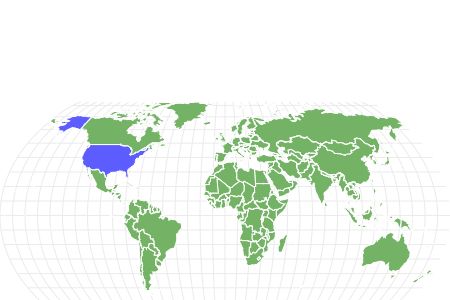Balinese
Felis catus
Playful and energetic breed!
Advertisement
Balinese Scientific Classification
- Kingdom
- Animalia
- Phylum
- Chordata
- Class
- Mammalia
- Order
- Carnivora
- Family
- Felidae
- Genus
- Felis
- Scientific Name
- Felis catus
Read our Complete Guide to Classification of Animals.
Balinese Conservation Status
Balinese Facts
- Fun Fact
- Playful and energetic breed!
- Other Name(s)
- Purebred longhaired Siamese, Longhaired Siamese, Thai Siamese
- Temperament
- Affectionate, playful and energetic
- Diet
- Omnivore
View all of the Balinese images!
The Balinese, also called the purebred long-haired Siamese or Thai Siamese, is a Siamese cat with a silky, medium-long coat and fluffy tail.
Named after the mysterious eyes, regal, graceful movements, and flowing, lean lines of Balinese dancers, it is commonly believed its coat was simply a natural mutation of the Siamese, although some people believe the Siamese was outcrossed with the Angora. There are two body type standards of Balinese as with the Siamese: traditional (old style) or modern (American).
See all of our expert product reviews.
Today, the Javanese, which was initially a Balinese crossed with a Colorpoint Shorthair to get other colorpoints, is considered a type of Balinese or a modern colorpoint Balinese. The loving, chatty, playful, high-energy, tolerant cat is also one of the most intelligent breeds around and makes an excellent family pet and companion animal.
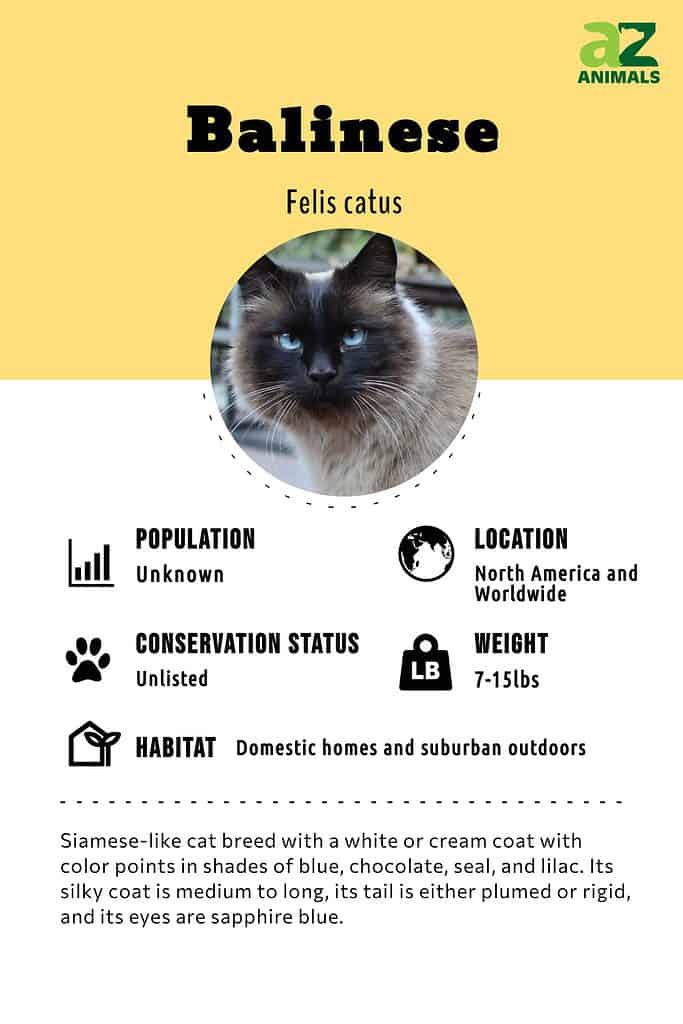
Breed History
It is now scientific knowledge that some Siamese cats carried a long-haired recessive gene. When Siamese cats were introduced into America in the late 19th century, some litters were born with long-haired versions, who were viewed by breeders in a negative light, as they didn’t meet the breed standards at that time which required Siamese cats to have short hair.
Breeders soon discovered that if they bred long-haired males and females together, who in turn would produce long-haired offspring, these cats were pure in their own right and could be considered a new breed. Only in 1928 is there a record of a long-haired Siamese being registered with the Cat Fanciers Federation.
In the United States, three separate breeders helped develop the Balinese breed: In 1955, Marion Dorsey of California began separating long-haired Siamese kittens from litters produced at her Rai-Mar Cattery to produce more. Later in the 60s, Helen Smith of New York not only bred long-haired Siamese, but she is responsible for the new breed’s name–Balinese. Inspired by the graceful movements of these gorgeous cats, the name she chose gave a nod to Asian Balinese dancers.
Thirdly, Sylvia Holland bred long-haired Siamese after encountering them at a show called “The Jewel City Cat Show” in California in 1956. She later purchased Marion Dorsey’s cattery Rai-Mar and set about getting Balinese established as its own breed. She worked tirelessly to gain its acceptance, as well as develop and preserve its own pure lineage. Balinese cats were accepted by the CFA in 1967 and accepted for Championship status in 1970.
Health and Entertainment for your Balinese
See all of our expert product reviews.
Traits: What to Know Before You Buy
The Balinese cat breed has unique traits:
- It is not hypoallergenic, but close enough. Although it’s not immune from causing reactions in cat allergy sufferers, its fur has far fewer allergens than most other breeds.
- The breed adapts well to indoor life but needs plenty of exercise to avoid becoming overweight with its athletic, muscular but fine-boned build.
- The silky coat is less prone to tangles and only needs grooming once or twice a week. It also sheds far less than you’d think due to there being only a single coat.
- Cat trees and high perches are a must for this breed, which enjoys jumping and being agile.
Personality
Its personality is chatty, playful, and intelligent, with a loving, high-energy, and tolerant temperament that gets along well with children, other pets, and other cats.
This highly active cat also has a social and attention-demanding personality. It meows like the Siamese but not as loudly. Often becoming attached to one person, it nonetheless enjoys high places, including people’s shoulders.

©Fazlyeva Kamilla/Shutterstock.com
Size and Weight
The Balinese is a medium size, medium-long-haired domestic cat breed also known as the purebred longhaired Siamese, although slightly larger in size. Males weigh 8-15 pounds with an average of 12 pounds and females weigh 7-12 pounds with an average of 10 pounds. Both grow up to 1.5 feet in length, not including the tail, and measure 8 to 13 inches in height. Balinese kittens weigh 1.4 to 2.6 pounds at 8 weeks of age and reach maturity at 15 to 18 months.
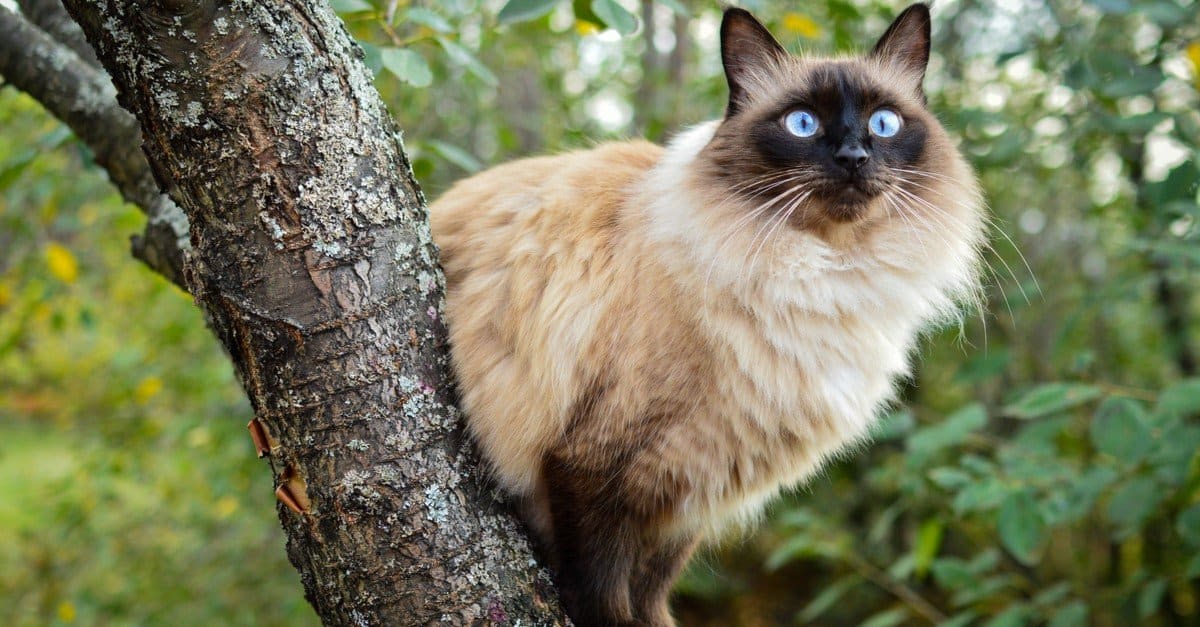
©Fazlyeva Kamilla/Shutterstock.com
Price
The price of a Balinese depends on several factors, such as where you’re buying it from. The cost of a Balinese adoption from a shelter is $75 to $100. On the other hand, the price is considerably more expensive if you purchase a Balinese from a breeder, with the cost ranging from $1,000 to 1,500.
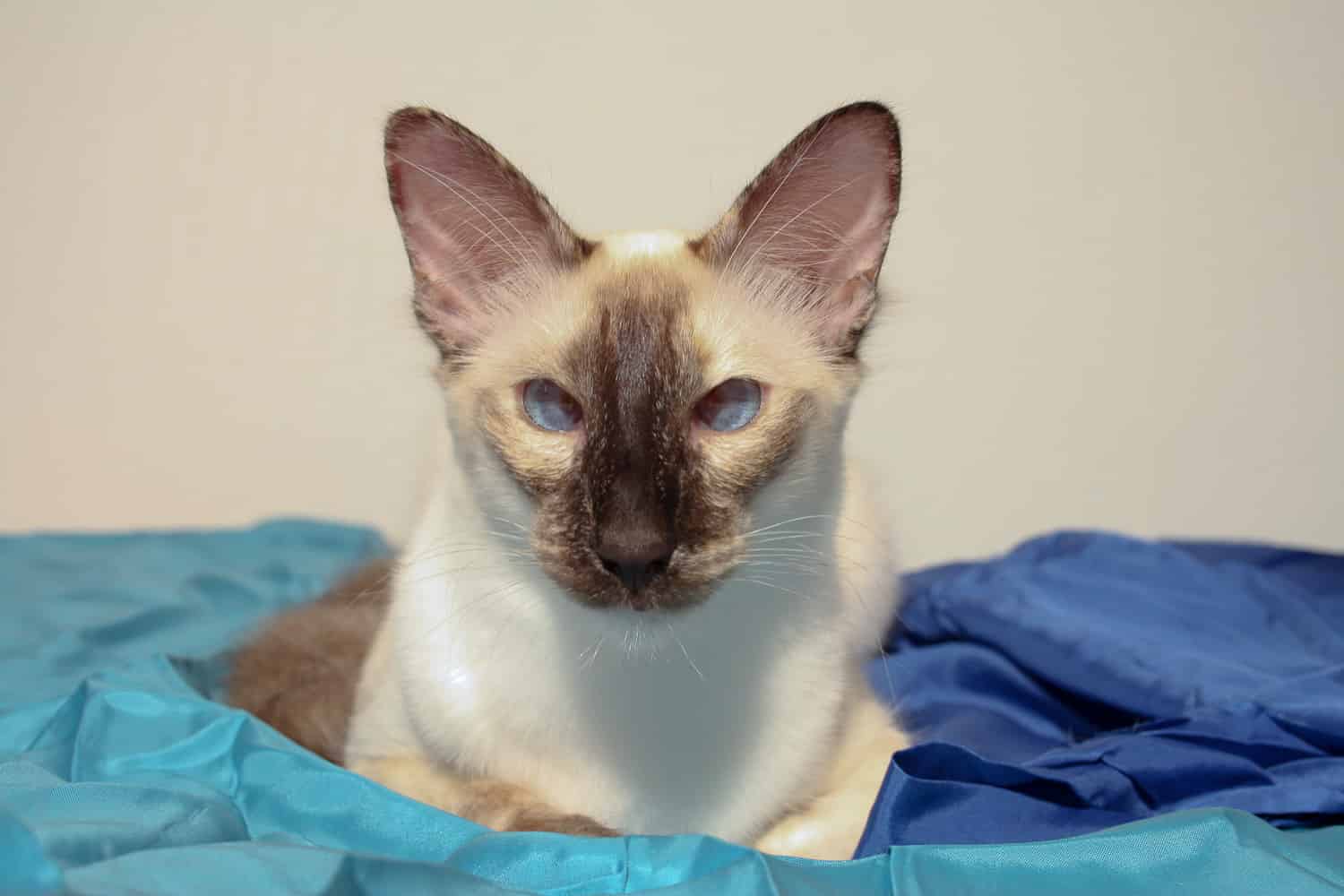
©Lisa Göris, CC BY 3.0, via Wikimedia Commons – License
Kittens
Early on in life, Balinese kittens show their playfulness. It is necessary to have scratching posts, toys, high perches, and games for their mental stimulation. While still a kitten, the coat tends to be cream or white before developing color points later on. To identify the color point of your Balinese kitten, you can look at its paw pads. Lilac and chocolate points have pink pads, while the seal and blue points have dark pads.
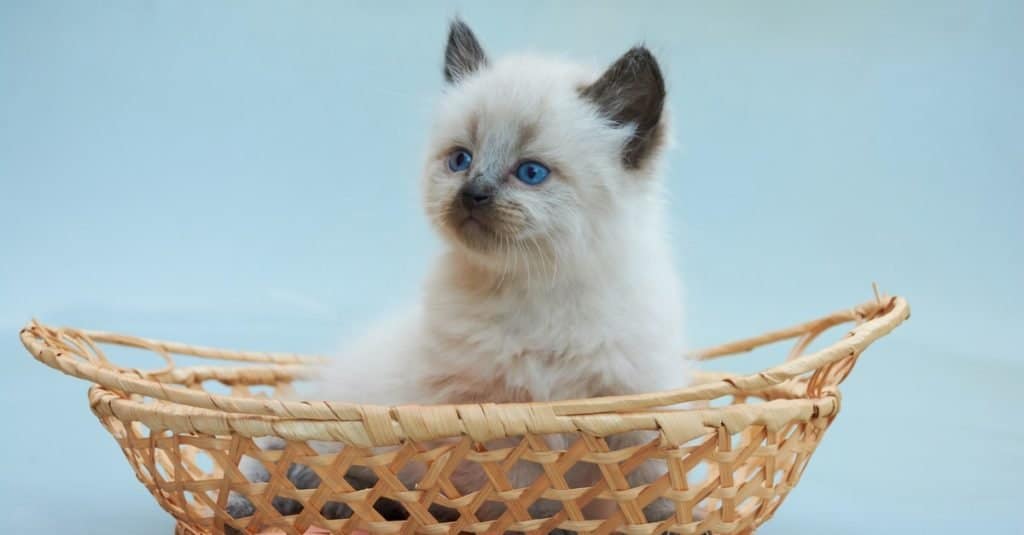
©Yura2087/Shutterstock.com
Lifespan
These cats tend to have a very long lifespan. At the very minimum, its lifespan ranges from 12 to 15 on average but can even be 18 to 22 years. With cat fanciers tending to have very small breeding circles with the occasional outcrossing, various unknown and genetic health issues are a possibility. You can ensure greater health and a longer lifespan by purchasing from a reputable breeder who has done health screenings on the kitten’s parents.
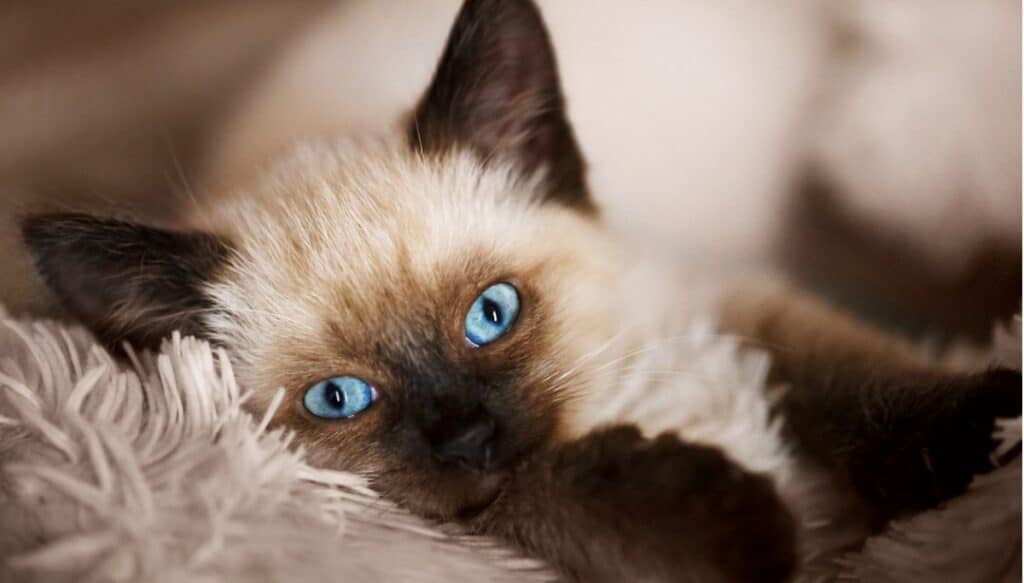
©iStock.com/Oksana Osypenko
Breed vs. Mixed
There are two body types of these purebred cats: traditional or old-style and modern or American. Both have sapphire blue eyes, long, graceful, slender, athletic, and fine-boned bodies, large ears, oval paws, long tails, and almond-shaped eyes. Males tend to be larger in weight and height than females. Due to the development of the longhaired Siamese as a distinct breed, the Balinese is slightly larger than its short-haired Siamese ancestor.
The Javanese is the result of crossing a Balinese with a Colorpoint Shorthair to obtain several other colorpoints, of which there are currently over 40. It is considered a separate breed in the American standard per the Cat Fanciers’ Association and a subtype of the Balinese per the Balinese Breed Council and Javanese Breed Council. It encompasses all other colorpoints besides the Balinese standard of blue, seal, lilac, and chocolate points per the Cat Fanciers’ Association and the lilac, chocolate, red, cream, tortoiseshell, and lynx points per most other associations, including the Cat Fanciers’ Federation.
These cats can be outcrossed to other breeds such as Colorpoint Shorthairs, Oriental Longhairs, Siamese, and Javanese. A Balinese cross with a Siamese will have a shorter coat than the Balinese.
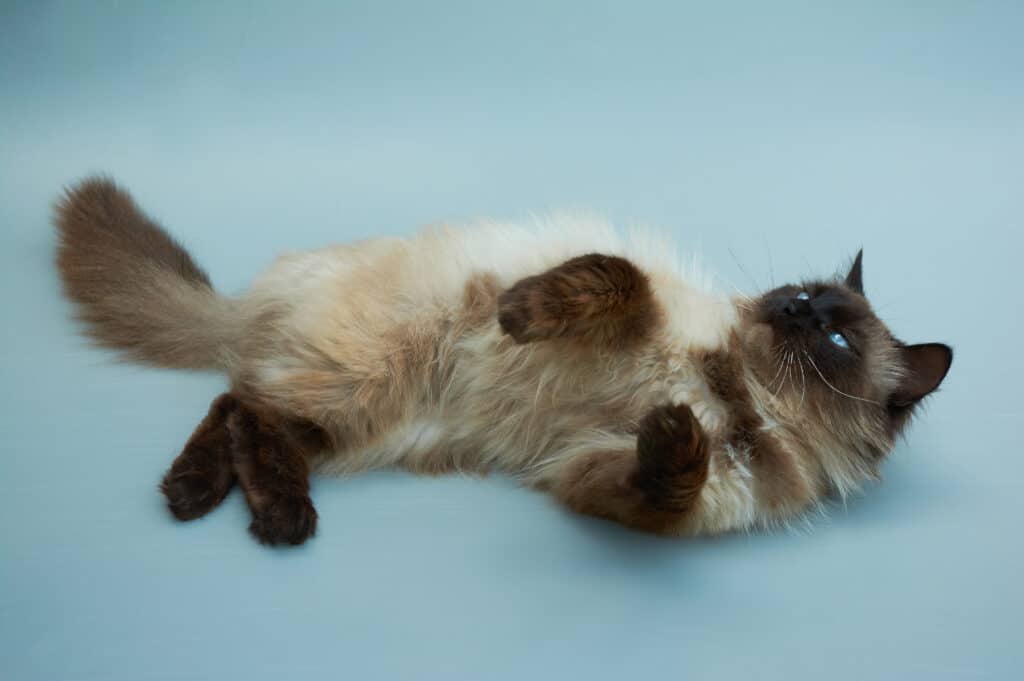
©iStock.com/Yura2087
Types of Balinese Cats and Colors
The traditional (old-style) Balinese build has a more robust body and wider head, whereas the modern (American) Balinese build has a more triangle-shaped head, wider, longer ears, and a longer and more slender body.
The description of the “point” in the Balinese, Siamese, and other cats with such coloring refers to having darker colors on the colder areas of their bodies, such as the ears, face, paws, and tail. The inclusion of the Javanese breed expanded the color palette of the Balinese to include over 40 different colors and patterns including the torbie (tortoiseshell tabby) with several color variations, and various colors of lynx and tortie points.
There are also other eye colors ranging from darker blue to violet. Although there are differences in what is considered standard colorpoints for the Balinese depending on the association, here is the list that was the most inclusive before the uniting of the Balinese and Javanese:
- Chocolate: Also called brown or cinnamon, it is a brown shade that is a mutation of black.
- Lilac: Also called lavender, lilac is diluted chocolate or chocolate with cream. Diluted colors are recessive traits, even in pure breeds.
- Seal: Dark brown point on a cream, beige or fawn-colored body.
- Blue: A diluted seal point.
- Red: A shade of light to dark red-orange.
- Cream: Light brown points on an off-white coat.
- Tortoiseshell: A point with random patches of red, black, and cream. It can also have variations such as seal tortie, which is predominated by dark brown and black patches
- Lynx: Also called Snow Tiger or Wildcat Points, this is either one of the four original points (lilac, chocolate, blue, or seal) with stripes.
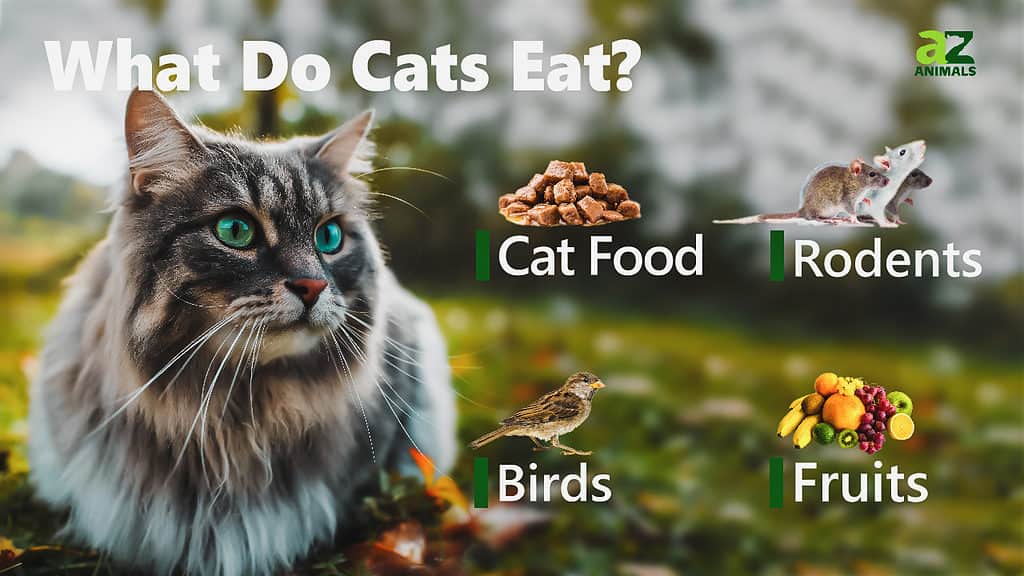
Balinese FAQs (Frequently Asked Questions)
Are Balinese herbivores, carnivores, or omnivores?
Balinese are Omnivores, meaning they eat both plants and other animals.
What Kingdom do Balinese belong to?
Balinese belong to the Kingdom Animalia.
What class do Balinese belong to?
Balinese belong to the class Mammalia.
What phylum to Balinese belong to?
Balinese belong to the phylum Chordata.
What family do Balinese belong to?
Balinese belong to the family Felidae.
What order do Balinese belong to?
Balinese belong to the order Carnivora.
What genus do Balinese belong to?
Balinese belong to the genus Felis.
What type of covering do Balinese have?
Balinese are covered in hair.
How many babies do Balinese have?
The average number of babies a Balinese has is 5.
What is an interesting fact about Balinese?
Balinese are a playful and energetic breed!
What is the scientific name for the Balinese?
The scientific name for the Balinese is Felis catus.
Are Balinese cats really hypoallergenic?
They are not considered officially hypoallergenic but are tolerated by most cat allergy sufferers because they produce less of the fel d1 protein that causes allergic reactions.
Are Balinese cats cuddly?
Yes, Balinese cats are very affectionate and enjoy physical affection from petting to cuddling and being lap cats.
Do Balinese cats shed a lot?
No, they are a low-shedding breed due to lacking an undercoat, which many other breeds have.
Do Balinese cats make good pets?
Yes, Balinese cats make excellent pets for the person or family that is able to give them playtime, affection, and cat accessories. There is no real difference in the personality of a male versus a female.
Thank you for reading! Have some feedback for us? Contact the AZ Animals editorial team.
Sources
- Wikipedia, Available here: https://en.wikipedia.org/wiki/Balinese_cat#cite_note-10
- Ask The Cat Docter, Available here: https://www.askthecatdoctor.com/kitten-weight-chart.html
- Siamese Royalty, Available here: https://siameseroyalty.com/balinese.html
- Meowingtons, Available here: https://www.meowingtons.com/blogs/lolcats/7-rare-cat-coat-colors
- Azureys Cats, Available here: https://www.azureyscats.com/balinesecatpicturegallery.html
- Life With Siamese Cats, Available here: https://www.life-with-siamese-cats.com/cinnamon-fawn-caramel-point-siamese.html
- Fandom, Available here: https://cats.fandom.com/wiki/Colorpoint_Balinese

